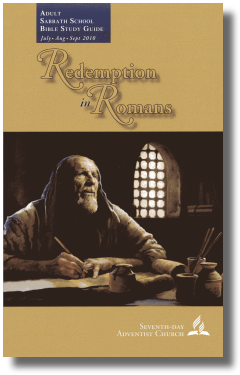|
Redemption in Romans |
 |
||
INTRODUCTION
“Redemption in Romans”He had been a monk, a diligent one at that. “I was indeed a pious monk, and followed the rules of my order more strictly than I can express. If ever a monk could attain Heaven by his monkish works, I should certainly have been entitled to it. If I had continued much longer, I should have carried my mortifications even to death.” No matter his works and mortifications, however, the monk never sensed acceptance with God, never believed that he was good enough to be saved. His personal despair was so great that it was destroying him mentally and physically, because—believing in the reality of God’s wrath—he feared the prospect of ever having to face it. After all, who wouldn’t? Then one day, through his study of the Bible, a text jumped out at him that changed not only his life but the history of the world. “The just shall live by faith” (Rom. 1:17). His eyes had been opened: his acceptance with God was based, not on his works, not on his bodily mortifications, not on his deeds but on the merits of Christ. Never again would he be open to the delusions of a theology that placed the hope of salvation in anything other than the righteousness of Christ given to the believer through faith alone. The monk, of course, was Martin Luther, who was used by God to start the greatest religious revolt in Christian history: the Protestant Reformation. For Luther, it all began in the book of Romans, the topic of this quarter’s study. It’s not surprising that the Protestant revolt against Rome began in Romans (ironically enough), because this book has played a key role in the history of Christian thought. All great movements in Christianity back to the pure gospel and to the theme of “justification by faith” have found their starting point in Paul’s epistle to the Romans. The epistle contains a complete theological presentation of the gospel and of the hope it presents to fallen humanity. As we study Romans, we’ll follow a crucial rule, and that is: we’ll seek to discover what the words of Scripture were meant to say to those to whom they were first addressed. We’ll look at them in their immediate context; then, after that, we’ll seek their meaning for us today. This doesn’t imply that the texts themselves change meanings; it implies, instead, that the truths taught by the Scriptures need to be applied to the present circumstances of those reading the texts. We must, therefore, first discover what the words of Paul meant to the Roman Christians. What was he saying to them, and why? Paul had a particular reason for writing to that congregation. There were certain issues he wished to clarify, but the great truths that he taught as he clarified those issues were not restricted to only his first readers. On the contrary, these words have reverberated across the centuries, teaching millions the wonderful news of the gospel and its foundational doctrine, justification by faith. It was this light, light from the book of Romans, that scattered the darkness which had enveloped Luther and millions of others, light that revealed to them not only the great truth of Christ pardoning sinners but also the power of Christ to cleanse them from sin. And it’s light from these pages that we, this quarter, will seek to uncover for ourselves as we study the great theme of salvation by faith alone as revealed in the book of Romans. This quarter is based on previous work by Don Neufeld (1914–1980), who served as associate editor of the Adventist Review for 13 years (1967–1980) and as one of the editors of The SDA Bible Commentary Series. Contents:Giardina Sabbath School Study HelpsJerry Giardina of Pecos prepares a series of helps to accompany the Sabbath School lesson. He includes all related scripture and most EGW quotations. Jerry has chosen the "New King James Version" of the scriptures this quarter. It is used with permission. The study helps are linked from each lesson and links to the whole quarter's Helps are provided here. in two versions: wordprocessing as an RTF file and HTML (Web Pages). Last updated on May 30, 2010 Editorial
Office: 12501 Old Columbia Pike, Silver Spring, MD
20904.
Copyright © 2010 by the Office of the Adult Bible Study Guide, General Conference of Seventh-day Adventist. All Rights Reserved. SSNET Web Site Home page |
|||